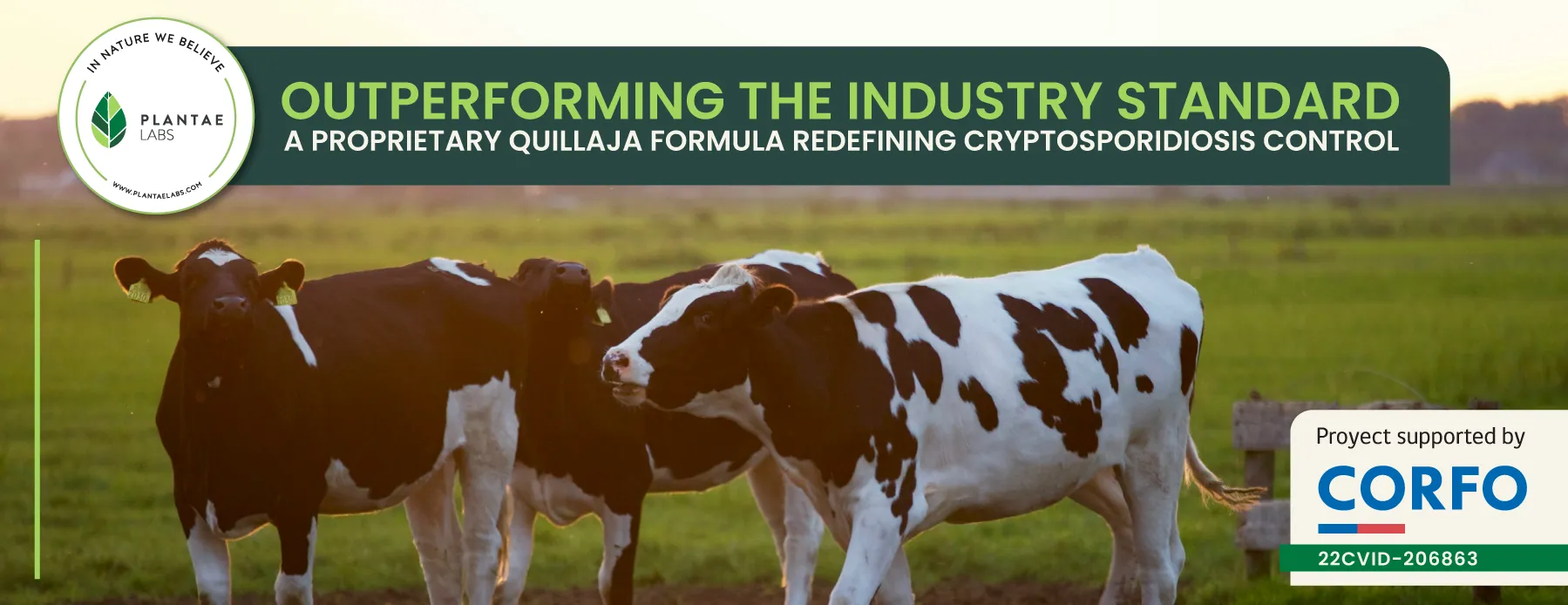At Plantae Labs, we are committed to transforming agriculture through innovative, sustainable solutions. Our recent research focuses on using Quillaja saponins, a natural extract from the Quillaja saponaria tree, to address cryptosporidiosis—a challenging disease for livestock producers worldwide. This project, led by our R&D specialist Victoria Tapia and supported by CORFO (Project Code: 22CVID-206873), aims to reduce the impact of this persistent infection, offering a new, eco-friendly approach to animal health. Our findings show the potential of Quillaja to not only manage infection but also support gut health in affected animals.
The Challenge of Cryptosporidiosis
Understanding the Disease
Cryptosporidiosis, caused by Cryptosporidium parvum, primarily affects young ruminants like calves, resulting in severe diarrhea, malnutrition, and stunted growth. The economic impact is substantial, as infected animals can suffer long-term productivity losses, Brunauer et al. (2021).
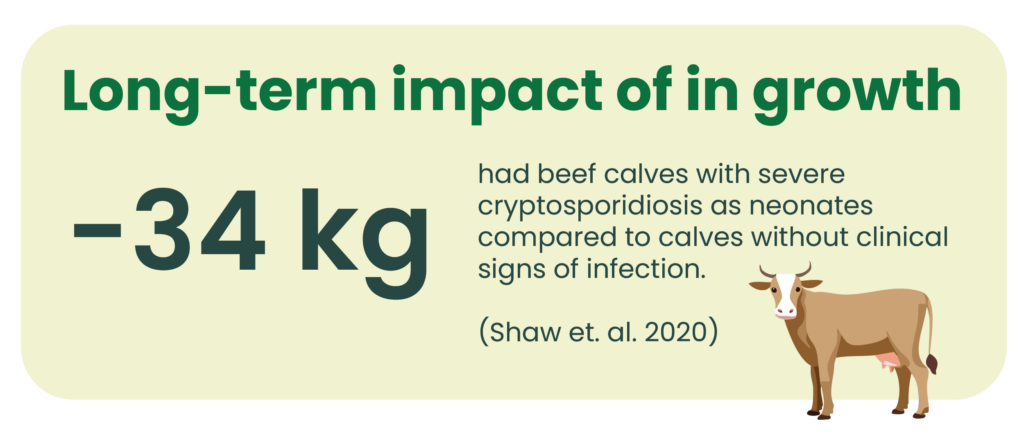
According to Shaw et al. (2020), calves with severe cryptosporidiosis can suffer a weight deficit of up to -34 kg compared to those not exposed to the infection. These losses underline the urgent need for effective, sustainable treatment methods that reduce the prevalence and severity of the disease.
Young ruminants are particularly susceptible to infections due to their developing immune systems. Environmental stressors like high parasite loads, inadequate uptake and quality of colostrum, and co-infections can significantly increase vulnerability to this infection, Li et al. (2021).
Transmission and Prevalence
The disease is primarily transmitted via the fecal-oral route. Calves can become infected through direct contact with infected animals or by ingesting oocysts from contaminated water or food sources. This is particularly concerning in environments with inadequate hygiene practices, as Cryptosporidium oocysts can survive harsh environmental conditions and resist traditional disinfectants such as quaternary ammonia and glutaraldehyde (Coleman et al., 2023). Cross-contamination in farms can occur during the management of infected calves, as pathogens are easily spread through contaminated clothing, such as boots, and equipment like nursing bottles, drench guns, and other implements. Studies indicate varying prevalence rates in different regions, with significant findings including a prevalence of 44% in the USA and 31% in Brazil (Urie et al., 2019; De Oliveira et al., 2023). Such high rates of infection highlight the urgency for effective control measures.
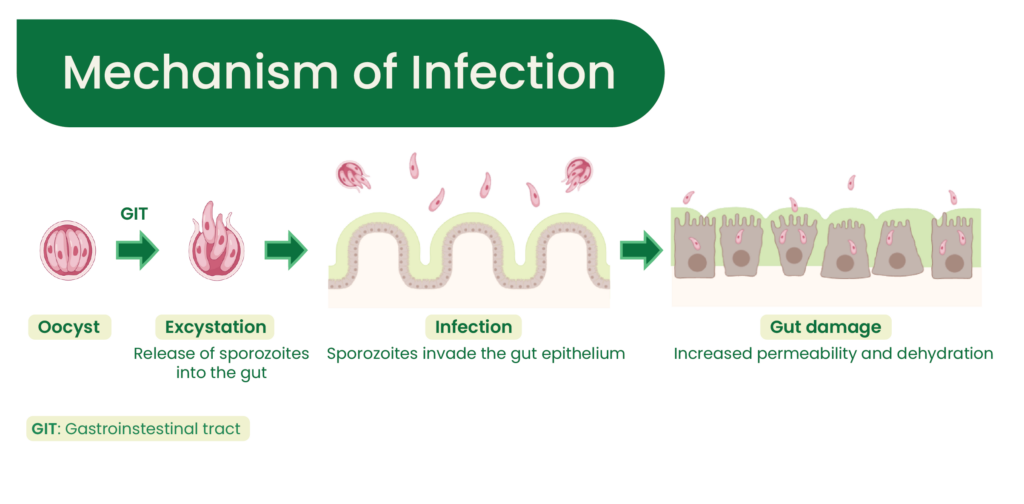
Economic Impact on Calves
The economic repercussions of cryptosporidiosis are substantial, not just in terms of treatment costs but also in terms of lost productivity. According to research by Shaw et al. (2020), calves suffering from severe cryptosporidiosis can face a weight deficit of up to 34 kg compared to their uninfected counterparts. This not only affects the immediate health and welfare of the animals but can also result in long-term productivity losses, making the disease a critical concern for livestock producers.
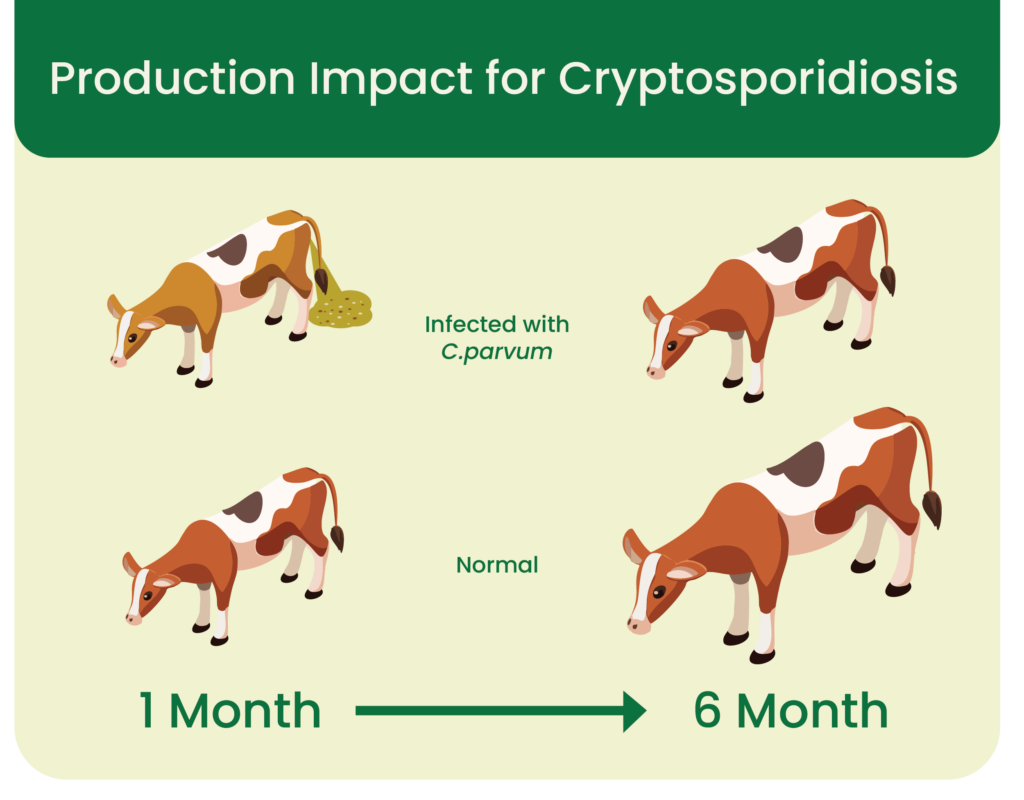
Why Traditional Solutions Aren’t Enough
While traditional treatments like synthetic options such as Halofuginone have proven effective, they often come with limitations, including side effects and regulatory constraints, Mundt et al. (2005). Producers are increasingly seeking natural alternatives that align with sustainable farming practices, which makes the exploration of natural compounds like Quillaja saponins particularly timely.
Our Natural Solution
Our focus has been on harnessing the potential of Quillaja saponins, known for their immune-modulating and antiparasitic properties, to address this challenge. Supported by CORFO, we are pioneering a solution that reduces the environmental footprint while enhancing livestock health.
Key Findings from Our Research
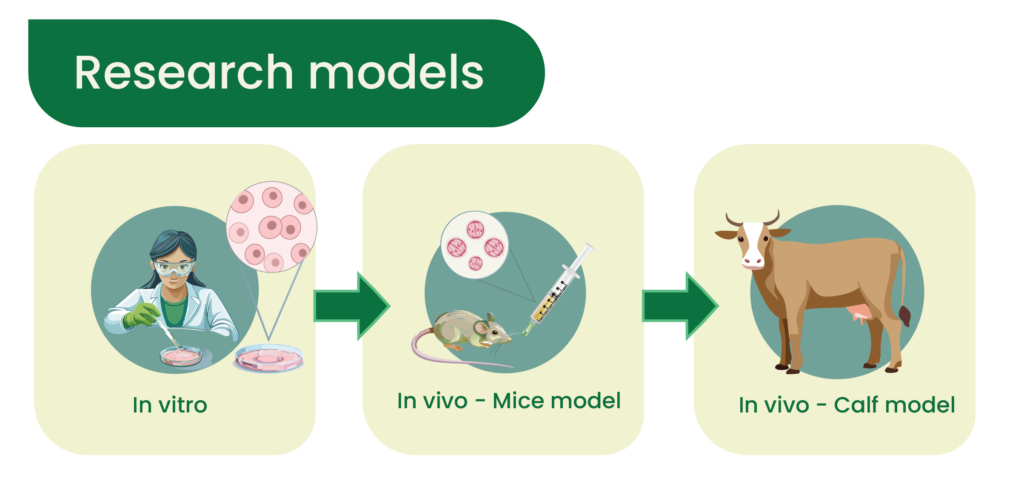
Our research utilized both in vitro and in vivo models to assess the efficacy of Quillaja saponins. In vitro studies began with intestinal cells, while in vivo models, including a mouse model, helped us establish the most effective dosage. The next phase will involve a calf model to confirm the results in the target species.
Reduced Oocyst Shedding: Breaking the Cycle of Infection
The trials conducted by our R&D team demonstrated that Quillaja saponins significantly reduced the shedding of C. parvum oocysts in infected animals. Lower oocyst shedding is crucial because it minimizes the contamination of the environment, reducing the risk of reinfection for other animals on the farm.
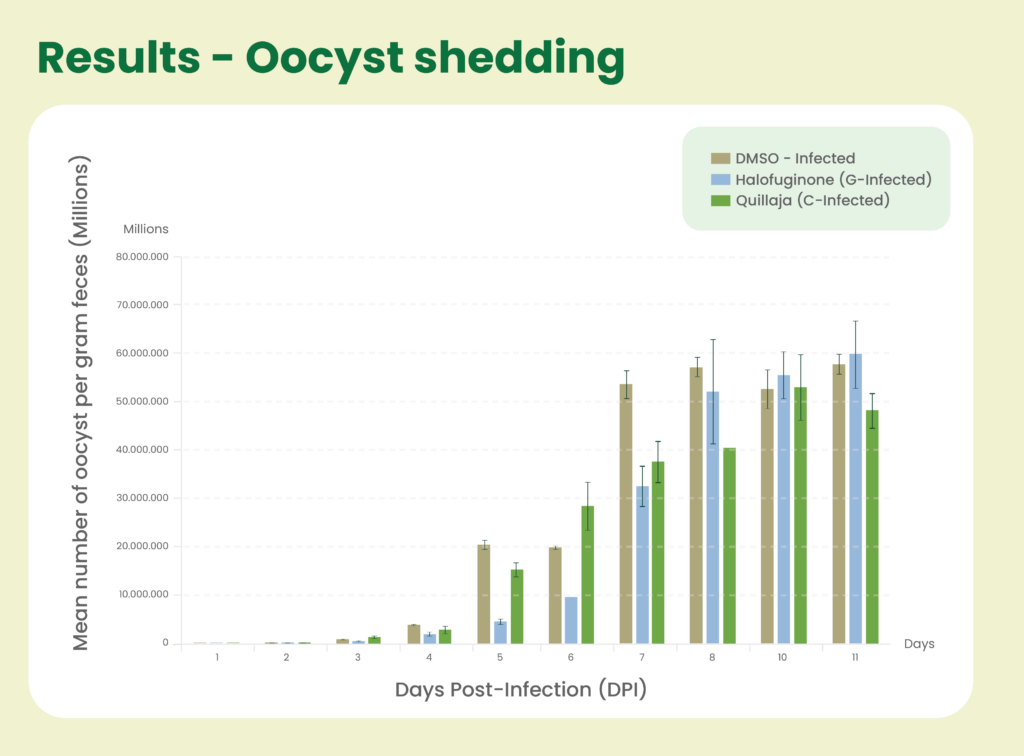
This reduction helps to break the cycle of infection, leading to healthier herds and a cleaner farm environment. Farmers can benefit from lower infection rates, which means better overall herd health and potentially fewer losses.
Supporting Gut Health Through Lower Inflammation (IL-18 Levels)
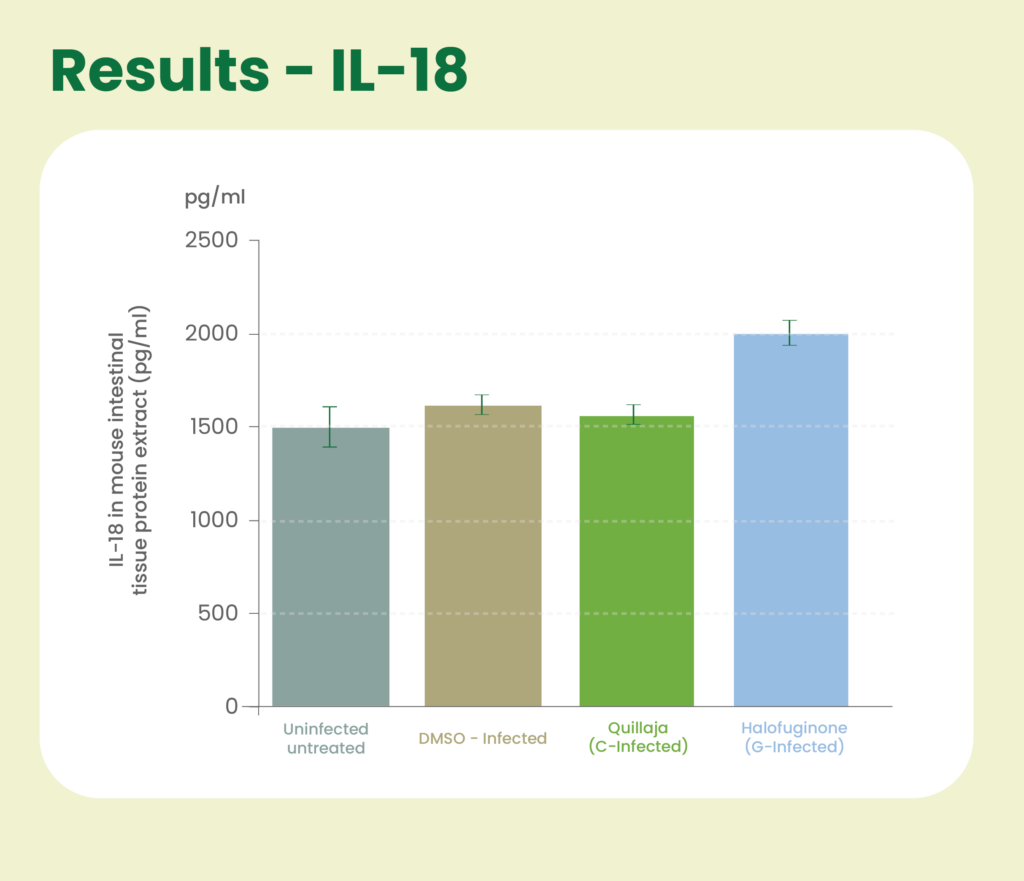
The results highlighted that Quillaja-treated animals had lower levels of IL-18 in intestinal tissues compared to untreated infected controls. IL-18 is an important marker of inflammation, playing a protecting role in INF- γ-mediated innate immunity during C. parvum infections Choudhry et al. (2012). Thus, lower levels indicate reduced intestinal damage, leading to better nutrient absorption and overall recovery.
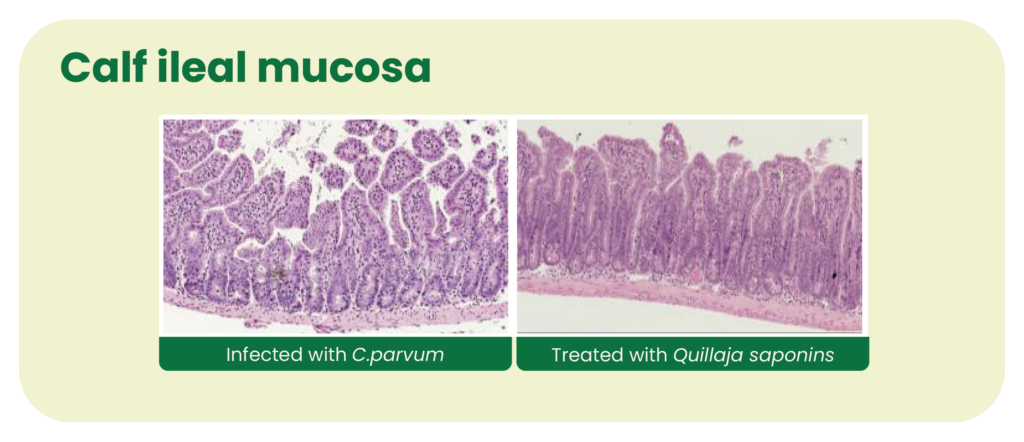
This suggests that Quillaja’s anti-inflammatory effects help to mitigate the damage caused by C. parvum, offering a dual benefit of infection control and support for the animal’s recovery process.
A Integrated Approach for Sustainable Farming
The combination of reduced oocyst shedding and improved gut health makes Quillaja an ideal part of an integrated approach to managing cryptosporidiosis. While it may not replace synthetic treatments in all scenarios, it offers a valuable, natural alternative for farms seeking to reduce chemical use.
This aligns with the growing trend toward organic farming and sustainable practices, helping producers meet market demands for healthier, environmentally responsible livestock management solutions.
Through project 22CVID-206873, we have explored the potential of Chile’s native Quillaja saponaria to address cryptosporidiosis.
Leading the Way in Natural Solutions for Animal Health
Our research highlights the potential of Quillaja saponins as an innovative solution for managing cryptosporidiosis. By reducing the spread of infection and promoting gut health, Quillaja offers a promising path toward more sustainable livestock management. At Plantae Labs, we are proud to contribute to the future of agriculture, where natural solutions can help farms improve performance metrics in an environmentally responsible manner.
References:
- Brunauer et al. (2021) – Prevalence of Worldwide Neonatal Calf Diarrhoea Caused by Bovine Rotavirus in Combination with Bovine Coronavirus, Escherichia coli K99, and Cryptosporidium spp.: A Meta-Analysis. Animals, 11(4), 1014. https://doi.org/10.3390/ani11041014
- Choudhry et al. (2012) – A Protective Role for Interleukin 18 in Interferon γ–Mediated Innate Immunity to Cryptosporidium parvum That Is Independent of Natural Killer Cells. The Journal of Infectious Diseases, 206, 117–124. https://academic.oup.com/jid/article/206/1/117/833779.
- Coleman, C. K., Kim, J., Bailey, E. S., Abebe, L. S., Brown, J., Simmons, O. D., & Sobsey, M. D. (2023) – Bromine and Chlorine Disinfection of Cryptosporidium parvum Oocysts, Bacillus atrophaeus Spores, and MS2 Coliphage in Water. Environmental Science & Technology, 57(47), 18744–18753. https://doi.org/10.1021/acs.est.3c00536
- De Oliveira, M. C., Oliveira, D. R., Gonçalves, N. R., & Arantes, U. M. (2023) – Occurrence and risk factors of bovine cryptosporidiosis in Brazil – Systematic Review. Revista Brasileira De Saúde E Produção Animal, 24. https://doi.org/10.1590/s1519-994020230013
- Li et al. (2021) – Prevalence and infection risk factors of bovine Eimeria in China: a systematic review and meta-analysis. Parasite, 28, 61. https://doi.org/10.1051/parasite/2021055.
- Mundt et al. (2005) – Pathology and treatment of Eimeria zuernii coccidiosis in calves: Investigations in an infection model. Parasite, 54(4), 223–230. https://doi.org/10.1016/j.parint.2005.06.003.
- Shaw et al. (2020) – Long-term production effects of clinical cryptosporidiosis in neonatal calves. International Journal for Parasitology, 50(5), 371–376. https://doi.org/10.1016/j.ijpara.2020.03.002.
- Urie et al. (2018) – Preweaned heifer management on US dairy operations: Part III. Factors associated with Cryptosporidium and Giardia in preweaned dairy heifer calves. Journal of Dairy Science, 101(10), 9199–9213. https://doi.org/10.3168/jds.2017-14060.
If you want to know more about our proprietary solutions for animal health, visit our website: www.plantaelabs.com/animal-health/
